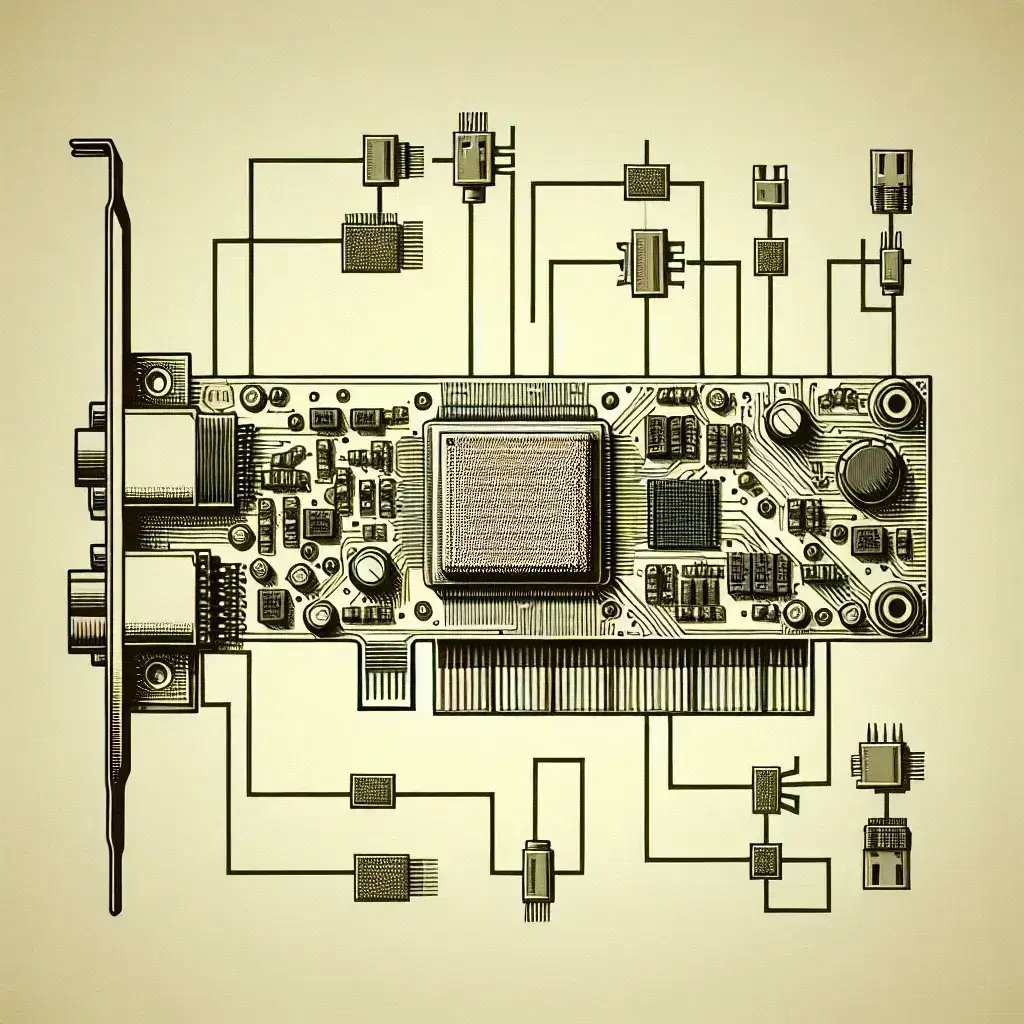When setting up or upgrading your computer’s network capabilities, understanding the different types of network adapters is essential. One critical piece of hardware that often comes up in this context is the PCI network adapter.
What is a PCI Network Adapter?
A Peripheral Component Interconnect (PCI) network adapter is an interface that allows computers to connect to a network. These adapters are plugged into PCI slots available on the computer’s motherboard. Essentially, they facilitate communication between the computer and other devices within a network by translating data between the device and the network protocol being used.
Below are the various types and speeds of PCI network adapters:
| Type | Speed |
|---|---|
| PCI | 133 MB/s |
| PCI-X | 1064 MB/s |
| PCIe 1.0 x1 | 250 MB/s |
| PCIe 2.0 x1 | 500 MB/s |
| PCIe 3.0 x1 | 985 MB/s |
Types of PCI Network Adapters
1. PCI
Standard PCI slots were introduced in the early ’90s and offer a maximum speed of 133 MB/s. They are often used in older computer systems.
2. PCI-X
PCI-X is an enhanced version of the conventional PCI slot, offering much higher speeds up to 1064 MB/s. These are generally used in servers and high-performance workstations.
3. PCIe (PCI Express)
PCIe is a more modern and flexible interface that has largely replaced PCI and PCI-X. PCIe slots come in various configurations such as x1, x4, x8, and x16, with x1 being the most common for network adapters.
Benefits of Using a PCI Network Adapter
- Enhanced Performance: These adapters often offer superior performance compared to integrated network solutions.
- Easy Upgrades: They provide an easy way to upgrade network capabilities without replacing the entire motherboard.
- Scalability: You can easily switch out adapters to keep up with newer, faster network standards.
- Reliability: Dedicated network adapters can offer more reliable connections, which is crucial for tasks such as online gaming or video conferencing.
How to Install a PCI Network Adapter
- Turn off the PC: Make sure your computer is turned off and unplugged before starting the installation.
- Open the case: Remove the computer case cover to access the motherboard.
- Locate an empty PCI slot: Identify an empty PCI, PCI-X, or PCIe slot suitable for your network adapter.
- Insert the adapter: Carefully insert the network adapter into the chosen PCI slot, ensuring it is securely attached.
- Secure the adapter: Use screws to secure the adapter in place, if necessary.
- Close the case and turn on the PC: Reassemble the computer case, plug it back in, and power it up.
- Install drivers: Once your system boots, install any necessary drivers that came with the adapter to ensure it functions correctly.
Common Applications of PCI Network Adapters
PCI network adapters find usage in various applications, such as:
- Home Networks: Typically used to upgrade older home PCs to modern network standards.
- Business Networks: Essential for office environments requiring stable and fast network connections.
- Servers: Often used in servers to handle high network loads and improve reliability.
- Gaming: Dedicated network adapters can reduce latency, improving the gaming experience significantly.
Future Trends in PCI Network Adapters
As technology continues to advance, so too do the capabilities of PCI network adapters. Here are some future trends to watch:
- Increased Speeds: With the advent of PCIe 4.0 and even 5.0, data transfer rates are expected to surge, making high-speed networking even more accessible.
- Multi-Gigabit Ethernet: Expect to see more affordable and widely available multi-gigabit network cards, offering speeds of 2.5G, 5G, and even 10G.
- Wireless Integration: Future adapters may increasingly combine wired and wireless functionalities into a single, seamless interface, thus simplifying network configurations.
- Energy Efficiency: Modern PCI adapters are transitioning towards being more energy-efficient, reducing their power consumption for greener tech solutions.
Conclusion
A PCI network adapter is a versatile and essential component for improving your computer’s network capabilities. Whether you’re looking to upgrade an old system or build a new one, understanding the types, benefits, and latest trends in PCI network adapters can help you make an informed decision.

